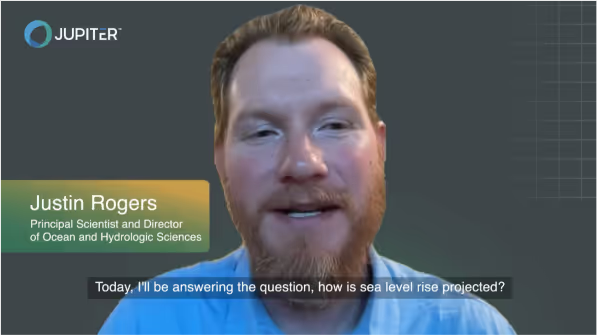Transcript
Today I’ll be answering the question “How is sea level rise projected?”
Different climate emission scenarios create different amounts of heat in the atmosphere, and we model this using global climate models. This heat that's in the atmosphere then has impacts on the oceans. And so the first impact is expansion of the ocean. As it warms and heats, the water in the ocean itself expands.
The second impact is melting of the ice and glaciers and ice sheets, such as in Antarctica and Greenland.
And the third impact is how water is stored on land and lakes and groundwater.
Finally, how the land moves relative to the ocean is called subsidence and tectonic movement. And this can have a very large impact on sea level rise locally.
So you add up all these factors and you get different sea level rise rates for different climate scenarios. These are projections in time and they have a range of uncertainty.
The final point here is that sea level rise is not the same everywhere on the planet. You have global mean sea levels which is the average over the total earth, but then you also have different sea level rise rates in different places. And this is because of the contributing factors that I mentioned.
I hope this helps answer the question and I look forward to seeing you next time. Thank you.
.webp)

